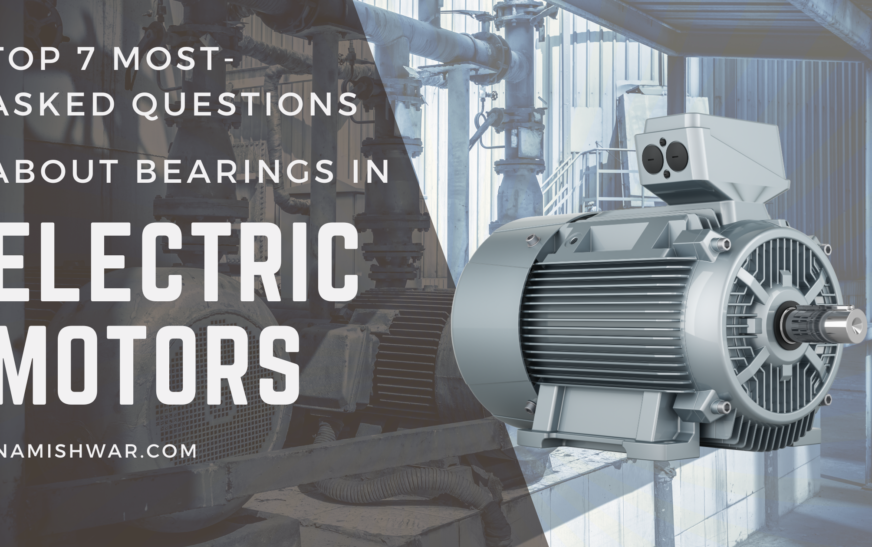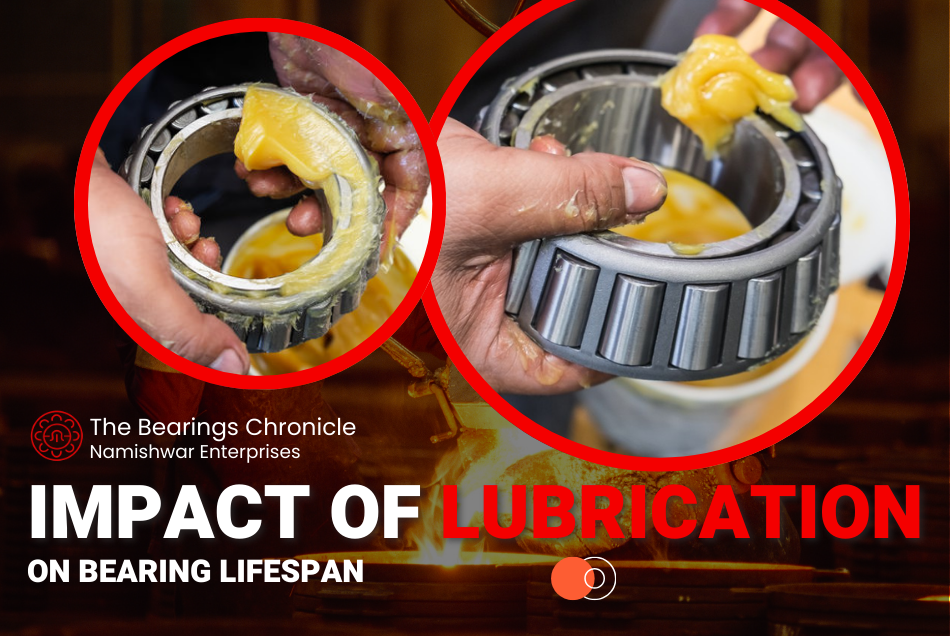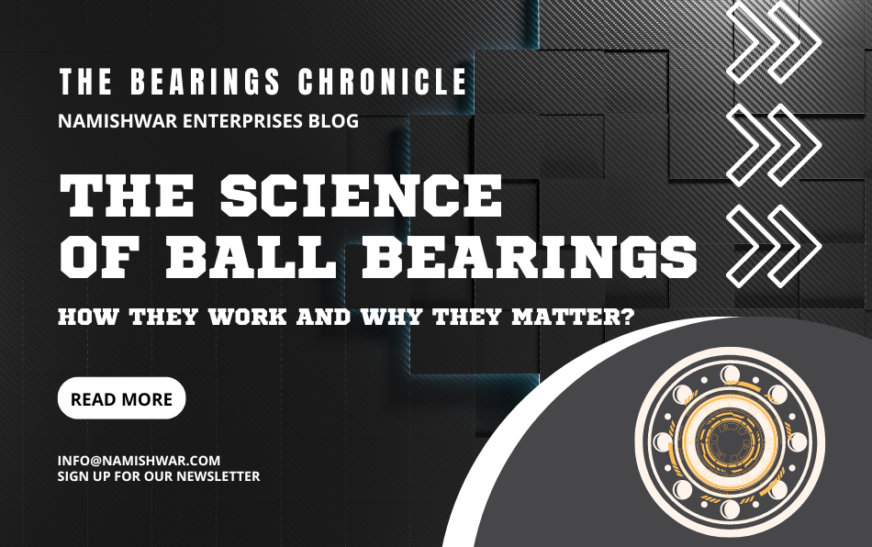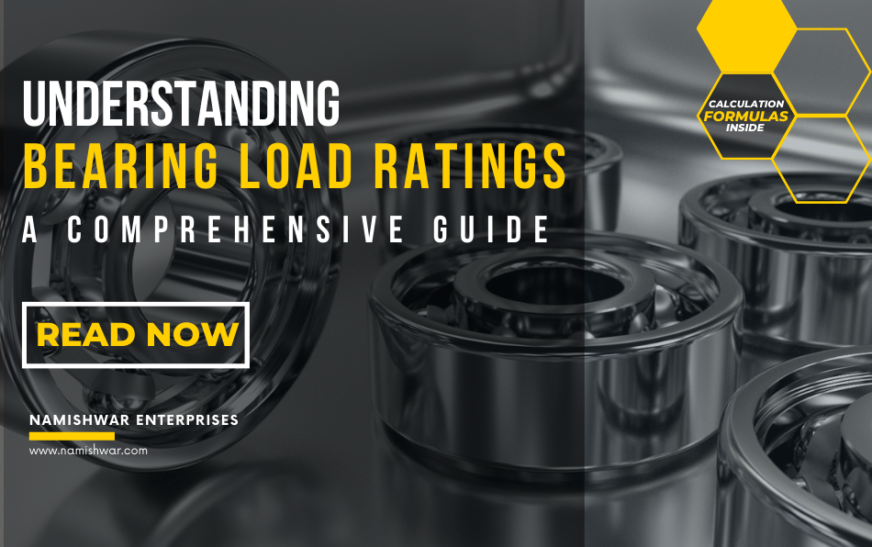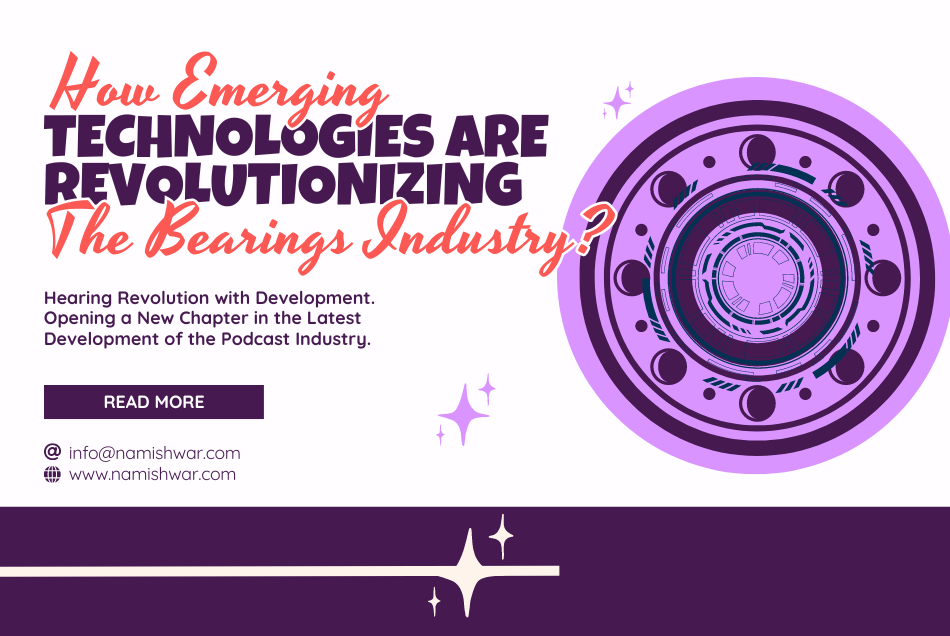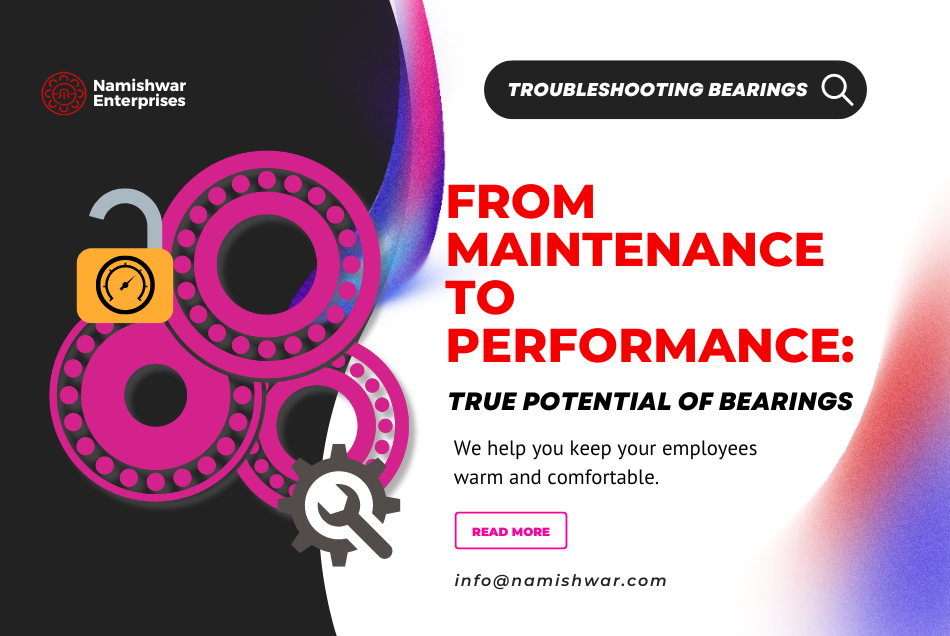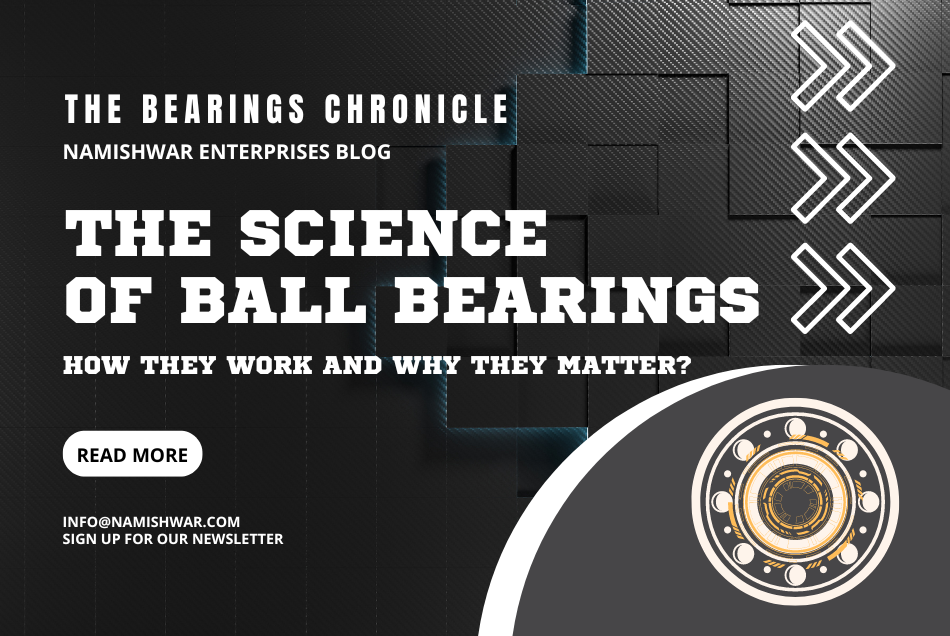What are the latest trends in bearing technology for electric motors?
As the electric motor industry surges forward with technological advancements, bearing technology has become a focal point of innovation. Bearings, the unsung heroes in electric motors, play a crucial role in enhancing efficiency, reliability, and performance. In this article, we delve into the latest trends in bearing technology for electric motors, exploring how these advancements are shaping the industry’s landscape.
1. Advanced Coating Technologies
The first major trend in bearing technology is the development of advanced coating technologies. These coatings are designed to reduce friction, increase wear resistance, and extend the life of bearings. For instance, diamond-like carbon (DLC) coatings and ceramic coatings are becoming popular due to their superior hardness and low friction properties. These coatings are especially beneficial in high-speed applications where minimizing friction is crucial for efficiency.
2. Hybrid Bearings
Hybrid bearings, which combine steel rings with ceramic balls, are gaining traction in the electric motor industry. The use of ceramic balls reduces the overall weight and inertia of the bearing, leading to lower energy consumption. Additionally, ceramic materials are electrically insulating, which prevents electrical arcing and reduces the risk of damage in applications involving variable speed drives. This makes hybrid bearings ideal for high-performance electric motors, including those used in electric vehicles and industrial machinery.
3. Enhanced Lubrication Systems
The importance of proper lubrication cannot be overstated in bearing performance. Recent trends indicate a shift towards advanced lubrication systems that can operate in extreme conditions. For example, solid lubricants and high-temperature greases are being developed to ensure optimal performance in harsh environments. Moreover, lubricants infused with nanoparticles are being explored to provide longer-lasting and more efficient lubrication, thereby reducing maintenance costs and downtime.
4. Smart Bearings with Sensor Integration
As industries move towards smart manufacturing and Industry 4.0, the integration of sensors into bearings is becoming increasingly common. These smart bearings can monitor various parameters such as temperature, vibration, and rotational speed in real-time. By providing valuable data, these sensors enable predictive maintenance, helping to prevent unexpected failures and optimize operational efficiency. This trend is particularly significant in critical applications where downtime can result in substantial financial losses.
5. Noise Reduction and Vibration Control
With the growing demand for quieter and smoother electric motors, noise reduction and vibration control have become key focus areas in bearing technology. Manufacturers are developing bearings with optimized geometries and materials to minimize noise and vibrations. This is especially important in applications like HVAC systems, electric vehicles, and consumer electronics, where quiet operation is a significant selling point.
6. Energy Efficiency and Sustainability
The push towards energy efficiency and sustainability is influencing bearing trends in electric motors. Bearings that reduce friction and energy loss are in high demand as industries strive to meet stringent energy efficiency standards. Additionally, there is a growing interest in eco-friendly materials and manufacturing processes. For example, the use of recycled steel and biodegradable lubricants is being explored to minimize the environmental impact of bearing production and disposal.
7. Miniaturization and High-Speed Applications
As devices and machinery become smaller and faster, the demand for compact and high-speed bearings is increasing. Miniaturized bearings are essential in applications such as drones, robotics, and medical devices, where space is limited. Additionally, high-speed bearings are crucial in electric motors used in applications like electric vehicles and industrial automation, where speed and precision are paramount.
Finally,
The trends in bearing technology for electric motors reflect the industry’s broader goals of enhancing efficiency, reliability, and sustainability. From advanced coatings and hybrid bearings to smart sensors and eco-friendly materials, these innovations are driving the electric motor industry forward. As technology continues to evolve, we can expect further advancements in bearing design and materials, paving the way for more efficient and reliable electric motors.
How is the demand for high-efficiency bearings influencing the electric motor industry?
The electric motor industry is witnessing a surge in demand for high-efficiency bearings, driven by the increasing need for energy savings, reduced operational costs, and improved performance. This demand is reshaping the landscape of the industry, pushing manufacturers to innovate and develop new solutions. In this article, we explore how the demand for high-efficiency bearings is influencing the electric motor industry, highlighting key trends and developments.
1. Focus on Energy Efficiency
One of the primary drivers of the demand for high-efficiency bearings is the focus on energy efficiency. As global energy consumption rises, industries are under pressure to reduce their carbon footprint and operational costs. High-efficiency bearings minimize friction, which in turn reduces energy loss. This makes them an essential component in electric motors used in various applications, including industrial machinery, HVAC systems, and electric vehicles.
2. Development of Low-Friction Materials
To meet the demand for high-efficiency bearings, manufacturers are developing low-friction materials that enhance the performance of electric motors. For example, ceramic and polymer materials are increasingly being used in bearing components due to their low friction coefficients. These materials not only reduce energy consumption but also extend the lifespan of bearings, leading to lower maintenance costs and improved reliability.
3. Integration of Advanced Coatings
Advanced coatings are another critical aspect of high-efficiency bearings. Coatings such as diamond-like carbon (DLC) and molybdenum disulfide (MoS2) are being applied to bearing surfaces to reduce friction and wear. These coatings provide a smooth, hard surface that minimizes resistance and allows for smoother operation. The use of advanced coatings is particularly beneficial in high-speed applications, where reducing friction is crucial for maintaining efficiency and preventing overheating.
4. Importance of Precision Engineering
Precision engineering plays a vital role in the development of high-efficiency bearings. As the demand for compact and high-performance electric motors grows, manufacturers are focusing on producing bearings with tight tolerances and minimal runout. This ensures smooth operation, reduces energy loss, and enhances the overall efficiency of the motor. Precision-engineered bearings are especially important in applications such as robotics and aerospace, where even minor inefficiencies can have significant impacts.
5. Smart Bearings for Predictive Maintenance
The integration of smart technology into bearings is another trend driven by the demand for high-efficiency solutions. Smart bearings equipped with sensors can monitor parameters such as temperature, vibration, and rotational speed in real-time. This data can be used for predictive maintenance, allowing operators to identify potential issues before they lead to costly failures. By reducing downtime and maintenance costs, smart bearings contribute to the overall efficiency and reliability of electric motors.
6. Environmental Considerations
As industries become more environmentally conscious, the demand for eco-friendly high-efficiency bearings is rising. Manufacturers are exploring the use of sustainable materials and lubricants to minimize the environmental impact of bearing production and disposal. For instance, biodegradable lubricants and recycled steel are being used in bearing manufacturing processes. Additionally, high-efficiency bearings contribute to energy savings, which in turn reduces greenhouse gas emissions.
7. Applications in Electric Vehicles (EVs)
The electric vehicle (EV) market is a significant driver of the demand for high-efficiency bearings. EVs require bearings that can operate efficiently at high speeds and under varying loads. High-efficiency bearings help improve the range and performance of EVs by reducing energy loss and enhancing the efficiency of the drivetrain. As the EV market continues to grow, the demand for specialized high-efficiency bearings is expected to increase.
Finally,
The demand for high-efficiency bearings is having a profound impact on the electric motor industry. From the development of low-friction materials and advanced coatings to the integration of smart technology and sustainable practices, manufacturers are innovating to meet the needs of various applications. As industries continue to prioritize energy efficiency and sustainability, the role of high-efficiency bearings in electric motors will become increasingly important. This trend not only benefits the environment but also drives the evolution of the electric motor industry towards more efficient and reliable solutions.
What impact does digitalization have on bearing trends in electric motors?
Digitalization is revolutionizing various industries, and the electric motor industry is no exception. The integration of digital technologies is significantly influencing bearing trends, leading to the development of smarter, more efficient solutions. In this article, we explore the impact of digitalization on bearing trends in electric motors, highlighting the key advancements and benefits of this technological shift.
1. The Rise of Smart Bearings
One of the most notable impacts of digitalization is the emergence of smart bearings. These bearings are equipped with sensors that can monitor various parameters such as temperature, vibration, and rotational speed in real-time. The data collected by these sensors can be used for predictive maintenance, helping to prevent unexpected failures and reduce downtime. Smart bearings are particularly valuable in critical applications where reliability is paramount, such as in aerospace, automotive, and industrial machinery.
2. Enhanced Condition Monitoring
Digitalization has enabled more advanced condition monitoring techniques for bearings. Traditional methods of monitoring bearing health often relied on periodic inspections and manual data collection. However, with digital technologies, continuous monitoring is now possible. This allows for the early detection of potential issues, such as misalignment, imbalance, or lubrication problems, before they escalate into major failures. Enhanced condition monitoring not only extends the lifespan of bearings but also improves the overall efficiency of electric motors.
3. Data-Driven Decision Making
The availability of real-time data from smart bearings and other digital sensors allows for data-driven decision-making. Operators can analyze the data to optimize maintenance schedules, improve operational efficiency, and reduce costs. For instance, by monitoring bearing temperature trends, operators can adjust lubrication schedules to prevent overheating and extend bearing life. Data-driven decision-making also enables better asset management and resource allocation, leading to more efficient and cost-effective operations.
4. Integration with IoT and Industry 4.0
The integration of bearings with the Internet of Things (IoT) and Industry 4.0 technologies is another significant trend driven by digitalization. IoT-enabled bearings can communicate with other connected devices and systems, creating a network of smart components. This connectivity allows for seamless data sharing and automation, enhancing the overall efficiency of electric motor systems. For example, in a smart factory setting, IoT-enabled bearings can automatically adjust their operating parameters based on real-time data, optimizing performance and energy consumption.
5. Advanced Diagnostic Tools
Digitalization has also led to the development of advanced diagnostic tools for bearings. These tools utilize algorithms and machine learning techniques to analyze data from smart bearings and predict potential failures. By identifying patterns and anomalies in the data, these diagnostic tools can provide early warnings of issues such as bearing wear, misalignment, or lubrication degradation. This proactive approach to maintenance not only reduces the risk of unexpected downtime but also helps in optimizing maintenance schedules and resource allocation.
6. Customization and Personalization
Digital technologies have made it easier to customize and personalize bearing solutions for specific applications. Manufacturers can use data analytics and simulation tools to design bearings that meet the unique requirements of different industries and applications. For instance, bearings can be optimized for specific load conditions, operating speeds, or environmental factors. This level of customization ensures that the bearings deliver optimal performance and reliability in their intended applications.
7. Improved Supply Chain Management
Digitalization is also transforming supply chain management in the bearing industry. The use of digital tools and platforms allows for better tracking and management of inventory, reducing lead times and minimizing stockouts. Manufacturers can leverage digital technologies to streamline production processes, optimize logistics, and improve customer service. This not only enhances the overall efficiency of the supply chain but also reduces costs and improves customer satisfaction.
Finally,
Digitalization is having a profound impact on bearing trends in the electric motor industry. From the rise of smart bearings and enhanced condition monitoring to data-driven decision-making and advanced diagnostic tools, digital technologies are driving innovation and efficiency. As the industry continues to embrace digitalization, we can expect further advancements in bearing design, performance, and maintenance. These trends not only improve the reliability and efficiency of electric motors but also contribute to the broader goals of Industry 4.0 and smart manufacturing.
How are manufacturers addressing the challenge of reducing bearing friction in electric motors?
Reducing bearing friction is a critical challenge for manufacturers in the electric motor industry. Lower friction translates to higher efficiency, reduced energy consumption, and longer bearing life. In this article, we explore the various strategies and innovations that manufacturers are employing to tackle the challenge of reducing bearing friction in electric motors.
1. Development of Low-Friction Materials
One of the primary approaches to reducing bearing friction is the use of low-friction materials. Manufacturers are increasingly utilizing advanced materials such as ceramics, polymers, and composites in bearing components. Ceramic materials, in particular, are known for their low friction coefficients and high wear resistance. By incorporating these materials into bearings, manufacturers can significantly reduce friction and improve the overall efficiency of electric motors.
2. Advanced Coating Technologies
Coating technologies have come a long way in recent years, offering a viable solution for reducing bearing friction. Advanced coatings such as diamond-like carbon (DLC) and molybdenum disulfide (MoS2) are being applied to bearing surfaces to create a smooth, hard layer that minimizes friction. These coatings not only reduce energy loss but also protect the bearing from wear and corrosion. The use of advanced coatings is particularly beneficial in high-speed applications where minimizing friction is crucial for maintaining efficiency and preventing overheating.
3. Precision Manufacturing and Surface Finishing
Precision manufacturing and surface finishing are crucial factors in reducing bearing friction. The smoother the bearing surface, the lower the friction during operation. Manufacturers are investing in high-precision machining processes and advanced surface finishing techniques to produce bearings with minimal surface roughness. Techniques such as superfinishing, polishing, and lapping are commonly used to achieve ultra-smooth surfaces, thereby reducing friction and enhancing bearing performance.
4. Optimization of Bearing Design
Optimizing the design of bearings is another effective strategy for reducing friction. Manufacturers are exploring various design modifications, such as optimizing the geometry of the bearing raceways and reducing the contact area between rolling elements and raceways. By minimizing the contact area, manufacturers can reduce the frictional forces within the bearing. Additionally, the use of smaller and lighter rolling elements can further decrease friction and energy loss.
5. Use of Advanced Lubricants
Lubrication plays a critical role in reducing bearing friction. The use of advanced lubricants, including synthetic oils and greases, can significantly lower friction and enhance the performance of bearings. Manufacturers are also exploring the use of solid lubricants and lubricants infused with nanoparticles. These advanced lubricants provide a thin, uniform film that reduces metal-to-metal contact and minimizes friction. Proper lubrication not only reduces friction but also helps dissipate heat, preventing bearing overheating and extending bearing life.
6. Integration of Smart Technology
The integration of smart technology into bearings is an emerging trend that helps in optimizing lubrication and reducing friction. Smart bearings equipped with sensors can monitor parameters such as temperature, vibration, and lubrication levels in real-time. This data can be used to optimize lubrication schedules and ensure that bearings operate under optimal conditions. By preventing under-lubrication or over-lubrication, smart bearings help reduce friction and improve the overall efficiency of electric motors.
7. Continuous Research and Development
Continuous research and development (R&D) are essential for addressing the challenge of reducing bearing friction. Manufacturers are investing in R&D to explore new materials, coatings, and design concepts that can further reduce friction. Collaboration with research institutions, universities, and industry partners is also common, allowing for the exchange of knowledge and the development of innovative solutions. The ongoing pursuit of R&D ensures that manufacturers stay at the forefront of technological advancements in bearing technology.
Finally,
Reducing bearing friction is a complex challenge that requires a multi-faceted approach. From the development of low-friction materials and advanced coatings to precision manufacturing and smart technology integration, manufacturers are employing various strategies to tackle this challenge. As the electric motor industry continues to evolve, the focus on reducing friction will remain a key priority, driving innovation and efficiency. By addressing this challenge, manufacturers can enhance the performance, reliability, and sustainability of electric motors, contributing to the broader goals of energy efficiency and environmental sustainability.
What role do hybrid bearings play in modern electric motor applications?
Hybrid bearings, which combine metal rings with ceramic rolling elements, are increasingly being used in modern electric motor applications. These bearings offer a unique set of advantages, including reduced weight, lower friction, and improved reliability. In this article, we explore the role of hybrid bearings in modern electric motor applications, highlighting their benefits and the reasons behind their growing popularity.
1. Reduced Weight and Inertia
One of the most significant advantages of hybrid bearings is their reduced weight and inertia. Ceramic rolling elements are lighter than their steel counterparts, which leads to lower overall weight and reduced rotational inertia. This reduction in inertia is particularly beneficial in high-speed applications, such as electric vehicles and high-performance machinery, where quick acceleration and deceleration are essential. By minimizing energy loss, hybrid bearings contribute to improved efficiency and performance.
2. Lower Friction and Energy Consumption
Hybrid bearings are known for their low friction properties, which result from the use of ceramic materials. Ceramic rolling elements generate less friction compared to steel balls, reducing energy consumption and heat generation. This makes hybrid bearings ideal for applications where efficiency is crucial, such as in electric motors used in renewable energy systems, HVAC systems, and industrial automation. The lower friction also reduces the wear on bearing components, extending the lifespan of the bearings and reducing maintenance costs.
3. Electrical Insulation Properties
Ceramic materials used in hybrid bearings are electrically insulating, which prevents electrical arcing between the bearing components. This property is particularly important in applications involving variable speed drives and electric motors powered by inverters, where electrical arcing can cause damage to the bearings and other components. By preventing electrical arcing, hybrid bearings enhance the reliability and longevity of electric motors, making them a preferred choice in critical applications such as wind turbines and electric vehicles.
4. High-Speed Capability
The use of ceramic rolling elements in hybrid bearings allows for higher operating speeds compared to all-steel bearings. Ceramic materials can withstand higher rotational speeds without compromising performance, making hybrid bearings suitable for high-speed applications. This capability is especially valuable in industries such as aerospace, automotive, and industrial machinery, where high-speed operation is often required. The ability to operate at high speeds without generating excessive heat or wear is a key advantage of hybrid bearings.
5. Corrosion Resistance
Hybrid bearings exhibit excellent corrosion resistance due to the inert nature of ceramic materials. Unlike steel, ceramics are not prone to rust or corrosion, even in harsh environments. This makes hybrid bearings an ideal choice for applications in corrosive environments, such as marine equipment, chemical processing, and food and beverage industries. The corrosion resistance of hybrid bearings not only enhances their durability but also reduces the need for frequent replacements and maintenance.
6. Noise and Vibration Reduction
Another notable benefit of hybrid bearings is their ability to reduce noise and vibration. The smooth surface finish of ceramic rolling elements and their ability to maintain a consistent rolling motion contribute to quieter operation. This is particularly important in applications where noise reduction is a priority, such as in electric vehicles, HVAC systems, and household appliances. The reduced vibration also enhances the overall performance and comfort of the machinery, providing a better user experience.
7. Applications in Electric Vehicles (EVs)
Hybrid bearings are increasingly being used in electric vehicles (EVs) due to their unique advantages. The reduced weight and lower friction of hybrid bearings contribute to improved energy efficiency and longer driving range, making them an attractive option for EV manufacturers. Additionally, the electrical insulation properties of ceramic materials protect the bearings from electrical arcing, enhancing the reliability and safety of EV drivetrains. As the EV market continues to grow, the demand for hybrid bearings is expected to increase.
Finally,
Hybrid bearings play a crucial role in modern electric motor applications, offering a range of benefits that enhance efficiency, reliability, and performance. From reduced weight and lower friction to electrical insulation and corrosion resistance, hybrid bearings are well-suited for a variety of demanding applications. As industries continue to seek more efficient and reliable solutions, the use of hybrid bearings is likely to expand, driving further innovation in the electric motor industry. The unique properties of hybrid bearings make them an invaluable component in the quest for more efficient and sustainable technologies.
How is the adoption of electric vehicles (EVs) shaping the bearing trends in the electric motor industry?
The rapid adoption of electric vehicles (EVs) is significantly shaping the trends in the electric motor industry, particularly in bearing technology. As EVs demand highly efficient, reliable, and durable components, the role of bearings becomes increasingly critical. In this article, we explore how the adoption of EVs is influencing bearing trends in the electric motor industry, focusing on key developments and innovations.
1. Demand for High-Efficiency Bearings
The need for high-efficiency components in EVs is driving the demand for specialized bearings that can minimize energy loss and enhance overall vehicle performance. Bearings with low friction coefficients are essential in EVs to reduce energy consumption and extend driving range. This has led to the development and adoption of advanced materials, such as ceramics and polymers, in bearing manufacturing. These materials offer lower friction and wear resistance, contributing to improved efficiency and reduced maintenance costs.
2. Focus on Lightweight and Compact Design
The automotive industry, particularly the EV sector, places a premium on weight reduction to enhance vehicle efficiency and performance. This trend is influencing the design of bearings, with manufacturers focusing on creating lightweight and compact solutions. Hybrid bearings, which combine metal rings with ceramic rolling elements, are becoming increasingly popular due to their reduced weight and inertia. The lighter weight of these bearings contributes to overall vehicle weight reduction, improving energy efficiency and vehicle handling.
3. Integration of Smart Bearings
As EVs become more technologically advanced, the integration of smart bearings is gaining traction. Smart bearings equipped with sensors can monitor critical parameters such as temperature, vibration, and rotational speed in real-time. This data can be used for predictive maintenance, allowing manufacturers and operators to identify potential issues before they lead to costly failures. The ability to monitor bearing health and optimize maintenance schedules is particularly valuable in EVs, where reliability and safety are paramount.
4. High-Speed Capability and Durability
The electric motors used in EVs often operate at higher speeds compared to traditional internal combustion engines. This necessitates the use of bearings that can withstand high rotational speeds without compromising performance. Bearings with ceramic rolling elements, such as hybrid bearings, are well-suited for high-speed applications due to their ability to maintain low friction and minimal wear at elevated speeds. The durability and high-speed capability of these bearings make them ideal for use in EV drivetrains and other high-performance components.
5. Electrical Insulation and Reliability
EVs rely on electric drivetrains, which can generate electrical currents that may affect bearing performance. The use of ceramic materials in hybrid bearings provides electrical insulation, preventing electrical arcing between the bearing components. This insulation is crucial for maintaining the reliability and longevity of bearings in EV applications, where electrical arcing can cause damage and reduce component lifespan. The ability to prevent electrical arcing enhances the safety and reliability of EV systems, making hybrid bearings a preferred choice.
6. Noise Reduction and Comfort
Noise reduction is a significant consideration in EV design, as the absence of an internal combustion engine makes other noises more noticeable. Bearings with low noise characteristics are essential in minimizing the overall noise level in EVs. Manufacturers are developing bearings with optimized geometries and materials to reduce noise and vibration, enhancing the comfort and user experience of EVs. The focus on noise reduction is particularly important in premium and luxury EV models, where a quiet and smooth ride is a key selling point.
7. Sustainability and Eco-Friendly Materials
The EV industry is inherently aligned with the goals of sustainability and environmental consciousness. This alignment extends to the choice of materials and manufacturing processes for bearings. Manufacturers are increasingly exploring eco-friendly materials, such as recycled steel and biodegradable lubricants, in the production of bearings for EVs. The use of sustainable materials not only reduces the environmental impact of bearing production but also supports the overall mission of EVs to promote greener and cleaner transportation solutions.
Finally,
The adoption of electric vehicles is driving significant trends in bearing technology within the electric motor industry. From the demand for high-efficiency and lightweight bearings to the integration of smart technology and the use of eco-friendly materials, the EV sector is shaping the future of bearing design and innovation. As the EV market continues to expand, the importance of specialized bearings that meet the unique requirements of electric vehicles will only grow. The ongoing advancements in bearing technology not only enhance the performance and reliability of EVs but also contribute to the broader goals of sustainability and energy efficiency.
What are the key factors driving innovation in bearing materials for electric motors?
The electric motor industry is constantly evolving, and one of the key areas of innovation is in bearing materials. As the demand for more efficient, durable, and high-performance electric motors grows, the need for advanced bearing materials becomes increasingly critical. In this article, we explore the key factors driving innovation in bearing materials for electric motors, highlighting the latest trends and developments.
1. Demand for High-Efficiency Bearings
The push for greater energy efficiency is a major driver of innovation in bearing materials. Bearings with lower friction coefficients reduce energy loss and improve the overall efficiency of electric motors. This has led to the exploration of advanced materials such as ceramics, polymers, and composites, which offer superior low-friction properties compared to traditional steel. The use of these materials not only enhances efficiency but also extends the lifespan of bearings, reducing maintenance costs and downtime.
2. Need for High-Speed and High-Load Capabilities
As electric motors are increasingly used in high-speed and high-load applications, the demand for bearings that can withstand these conditions is growing. Innovations in bearing materials are focused on developing solutions that can operate reliably at high rotational speeds and under heavy loads. For instance, hybrid bearings with ceramic rolling elements offer high-speed capability and excellent load-carrying capacity. The development of new alloys and composite materials is also being explored to enhance the strength and durability of bearings in demanding applications.
3. Importance of Durability and Longevity
The longevity and durability of bearings are critical factors in electric motor applications, particularly in industries where equipment reliability is paramount. Innovations in bearing materials aim to improve wear resistance, corrosion resistance, and fatigue life. For example, ceramic materials are highly resistant to wear and corrosion, making them ideal for harsh environments. Additionally, the development of new coatings and surface treatments is helping to extend the service life of bearings, reducing the frequency of replacements and maintenance.
4. Focus on Noise and Vibration Reduction
The reduction of noise and vibration is an important consideration in bearing design, especially in applications such as electric vehicles, HVAC systems, and consumer electronics. Innovations in bearing materials are being driven by the need to minimize noise and vibration, enhancing the overall performance and comfort of electric motors. Advanced materials with damping properties, such as certain polymers and composite materials, are being used to achieve quieter and smoother operation.
5. Integration of Smart Technology
The integration of smart technology into bearings is another factor driving innovation in bearing materials. Smart bearings equipped with sensors can monitor parameters such as temperature, vibration, and lubrication levels in real-time. This requires materials that can accommodate sensor integration without compromising performance. The development of new materials that are compatible with electronic components and capable of transmitting data is a growing area of research. These smart materials enable predictive maintenance and optimize bearing performance, contributing to the overall efficiency of electric motors.
6. Environmental and Sustainability Considerations
As industries become more environmentally conscious, the demand for sustainable and eco-friendly bearing materials is increasing. Innovations in bearing materials are focused on developing solutions that have a lower environmental impact, both in terms of production and disposal. For example, the use of recycled materials and biodegradable lubricants is being explored to reduce the carbon footprint of bearing manufacturing. Additionally, the development of materials that require less energy to produce and have a longer service life aligns with the goals of sustainability and resource conservation.
7. Customization and Application-Specific Requirements
The growing demand for application-specific solutions is also driving innovation in bearing materials. Different applications have unique requirements, such as resistance to extreme temperatures, exposure to chemicals, or operation in vacuum environments. Innovations in bearing materials are focused on meeting these specific needs, offering tailored solutions that deliver optimal performance in various conditions. For instance, materials with high thermal conductivity are being developed for applications that require efficient heat dissipation.
Conclusion
Innovation in bearing materials is being driven by a combination of factors, including the demand for high efficiency, durability, noise reduction, and environmental sustainability. The development of advanced materials such as ceramics, polymers, and composites

